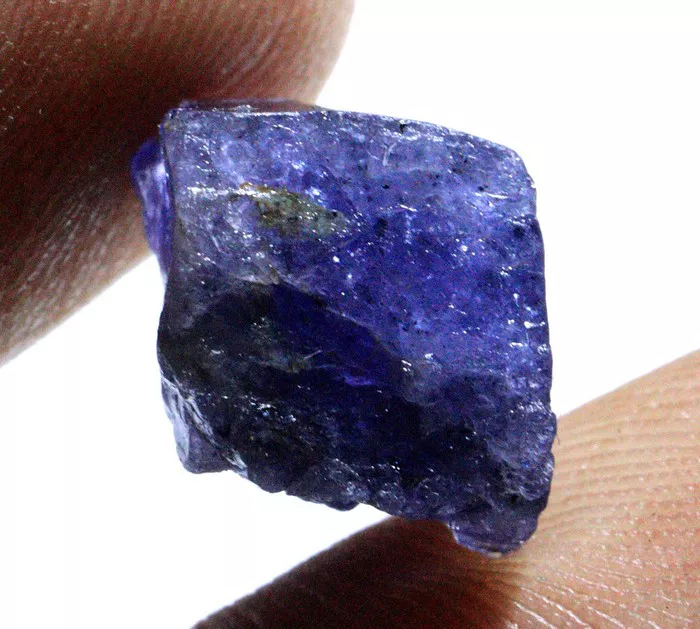Tanzanite, with its enchanting blue and violet hues, has captivated gemstone enthusiasts around the world. To truly appreciate this remarkable gem, it is essential to understand its composition, properties, and formation. This article aims to delve into the intricate world of tanzanite, unraveling the mineral composition, exploring its unique properties, and shedding light on the geological processes that give rise to this extraordinary gemstone.
Tanzanite: A Rare and Unique Gemstone:
Tanzanite, scientifically known as blue zoisite, is a rare gemstone that boasts a captivating range of colors. Its stunning blue-violet shades make it a highly sought-after gem in the world of jewelry. Understanding the composition and characteristics of tanzanite is key to appreciating its beauty and value.
The Mineral Composition of Tanzanite:
Tanzanite belongs to the mineral species zoisite, which is a complex silicate mineral. The gemstone’s coloration and unique properties are a result of impurities and trace elements within the crystal lattice structure. The primary constituents of tanzanite are calcium, aluminum, silicon, and oxygen, with additional elements contributing to its distinct color.
The Influence of Vanadium on Tanzanite Coloration:
Vanadium, a transition metal, plays a pivotal role in determining the color of tanzanite. The presence of vanadium within the crystal lattice absorbs specific wavelengths of light, resulting in the gemstone’s blue and violet hues. The varying concentrations of vanadium account for the wide range of colors observed in tanzanite.
Trichroism: Tanzanite’s Multidimensional Colors:
One of the remarkable features of tanzanite is its trichroism, which means it exhibits different colors when viewed from different angles. This phenomenon is a result of the crystal structure and the absorption and reflection of light within the gemstone. Tanzanite can display shades of blue, violet, and burgundy, adding to its allure and versatility.
Heat Treatment: Enhancing Tanzanite’s Color:
Heat treatment is commonly employed to enhance the color of tanzanite. By subjecting the gemstone to carefully controlled heating processes, the yellowish or brownish tints that may be present are minimized, resulting in a more vibrant and desirable blue or violet color. Heat treatment can unlock the full potential of tanzanite’s captivating hues.
Geological Formation of Tanzanite:
Tanzanite owes its existence to a series of geological events that occurred millions of years ago. The gemstone is formed through a combination of heat, pressure, and the presence of specific elements. It can be found in association with metamorphic rocks, which have undergone intense geological processes deep within the Earth’s crust.
Tanzanite’s Origin: Merelani Hills, Tanzania:
Tanzanite is found exclusively in one location on Earth—the Merelani Hills in northern Tanzania. These hills, nestled within the Arusha Region, have become synonymous with the mining and production of tanzanite. The geological conditions and mineral-rich environment of this region contribute to the formation and availability of this precious gemstone.
The Mining and Extraction of Tanzanite:
Mining tanzanite requires careful planning, advanced techniques, and adherence to strict safety and environmental standards. The extraction process involves identifying potential mining sites, conducting geological surveys, and employing various mining methods. Mechanized mining techniques have replaced traditional artisanal practices, ensuring greater efficiency and sustainability.
Tanzanite’s Uses and Applications:
Tanzanite’s exquisite beauty and rarity make it a popular choice for jewelry, particularly in the form of rings, earrings, and pendants. Its vibrant colors and unique properties also make it a favored gemstone for collectors and enthusiasts. The increasing popularity of tanzanite has led to its inclusion in prestigious jewelry designs and high-end fashion accessories.
Caring for Tanzanite: Maintenance and Preservation:
Proper care and maintenance are essential for preserving the beauty and longevity of tanzanite. Due to its relatively soft nature, tanzanite requires gentle handling and protection from scratches and impacts. Regular cleaning, proper storage, and protection from harsh chemicals are crucial for maintaining the gemstone’s luster and brilliance.
Conclusion:
Tanzanite, with its captivating colors and unique properties, continues to enthrall gemstone lovers worldwide. Understanding the mineral composition, formation processes, and characteristics of tanzanite provides a deeper appreciation for its beauty and value. As we explore the depths of the Earth and unravel the secrets of this extraordinary gem, tanzanite’s allure and mystique persist, reminding us of the wonders that nature bestows upon us.
Related topics:
- What Is the best color of tanzanite
- What Is tanzanite stone: A Simple Guide
- Where Is tanzanite found: A Quick Guide


